Entrance to Yaegaki Shrine with characteristic Izumo-style rice rope
Japan is a land of pilgrimages, and wherever you go there’s some kind of ‘course’ to follow. In former times this would have involved walking; nowadays it’s done for the most part by bustour or car!
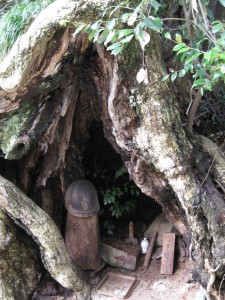
Tree opening with phallus
‘Ou Rokusha’ is a six-shrine tour in the area around Matsue, which was popular in Edo times. While visiting Izumo Taisha for the kamiarisai (the kami are still up there incidentally), I took the opportunity to spend a morning driving round. The six shrines were all prominent in their day, and all seem related to the primal creation myths.
Of the six, Yaegaki stands out – for various reasons! It’s particularly popular for its enmusubi (love connection), so much visited by young girls. The shrine is dedicated to Susanoo no mikoto, the storm god, and his bride, Inata-hime. That provides the love dimension. Also enshrined is their son, which provides the fertility aspect.
Dotted around the shrine grounds are phallic symbols, to which people wanting to become pregnant direct their prayers, plus a number of trees whose entwined trunks symbolise the union of lovers.
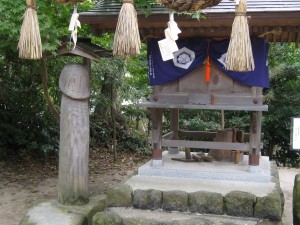
One of Yaegaki's subshrines
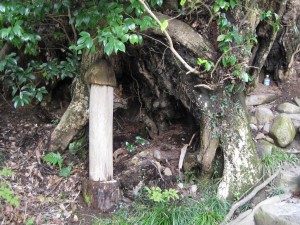
People with fertility problems, disease or simply wanting a baby are invited to pray here
Like other shrines in the region, the inner sanctuary once housed mural paintings depicting mythological scenes (now installed in the treasury). Not far from the shrine buildings is a grove and pond, which is said to be the original site of worship in ancient times. Even now the cedars suggest it would once have held a numinous quality, and according to legend Princess Inada supposedly gazed into this ‘Mirror Pond’ when beautifying herself.
Mythology relates how princess Inata (also called Kushinada) was about to be eaten by an eight-headed dragon, when Susanoo arrived and slew the serpent after cunningly feeding the eight heads with saké to befuddle them. The fair maiden he rescued then became his beloved, and they supposedly settled down on the very spot where Yaegaki Shrine now stands.
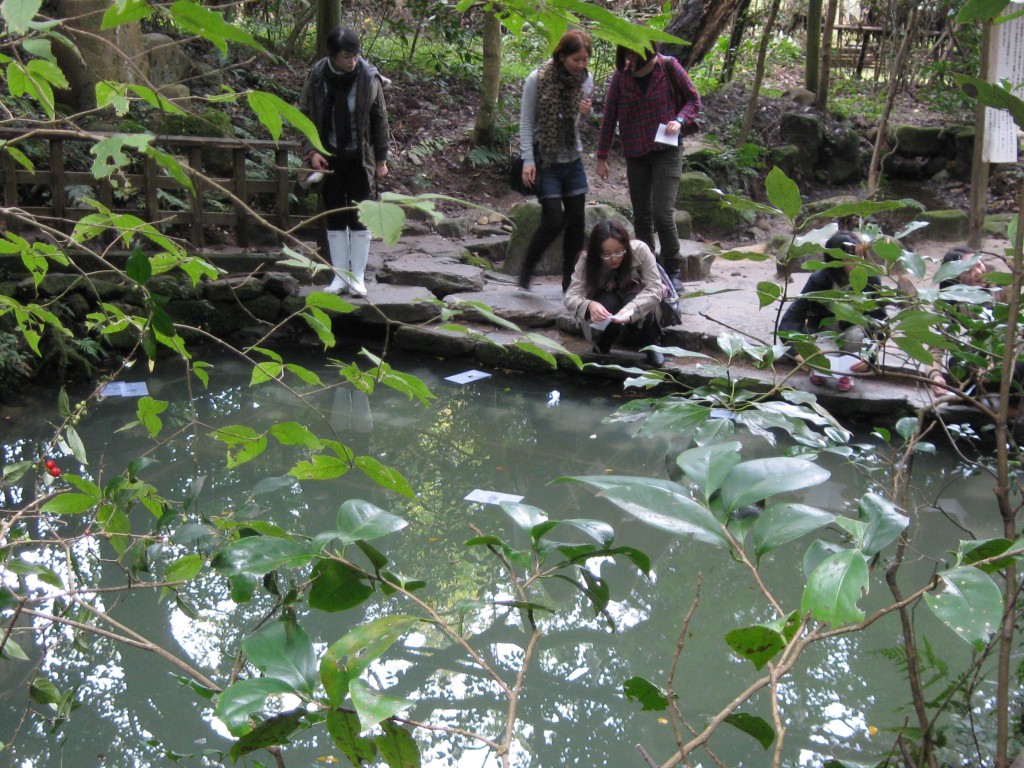
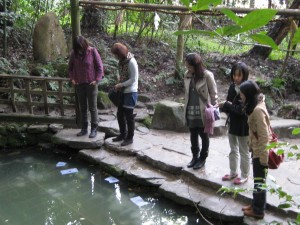
Young women watch their fortunes, hoping they will quickly sink
The pond is used now for fortune telling. The idea is that one puts a coin on one’s fortune paper and places it in the water. How long it takes to sink indicates how long one will have to wait to find one’s loved one. While I was there, several girls watied excitedly to see their fate, but I couldn’t help noticing at the back of the pond one fortune paper floating sodden and abandoned. Love was all around, but sadly it seemed someone had been excluded.
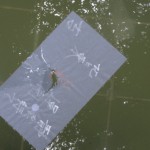
Floating fortune slip
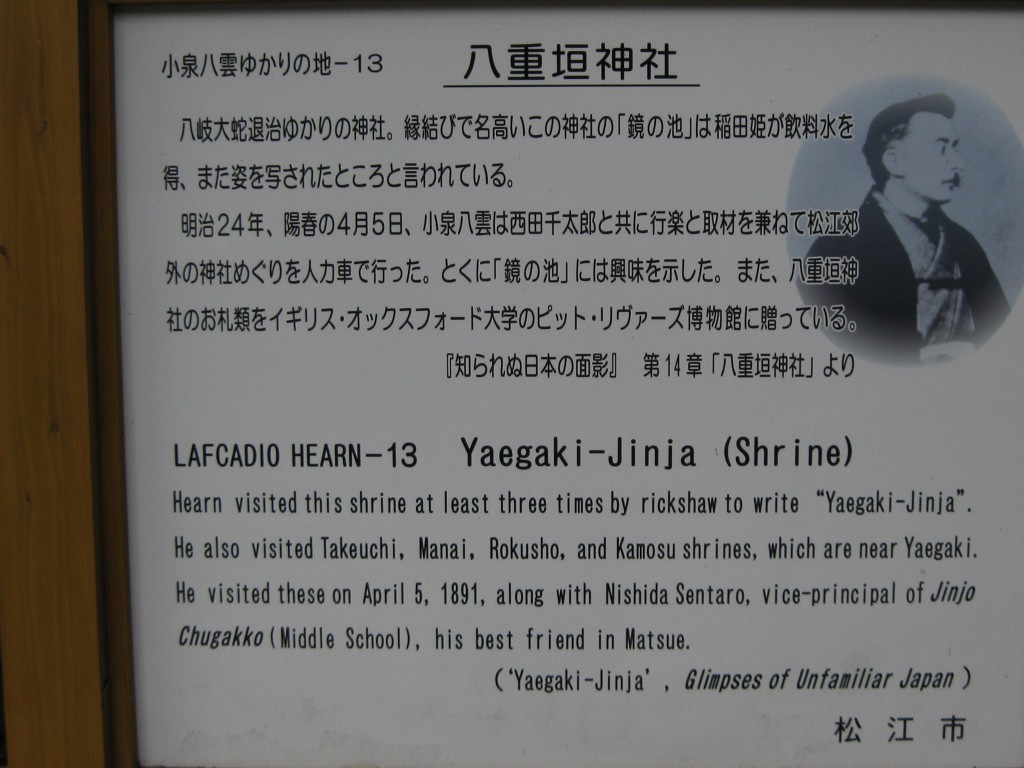
Hearn was here! The writer, who lived in nearby Matsue, is important enough in Japan to warrant his own signboard
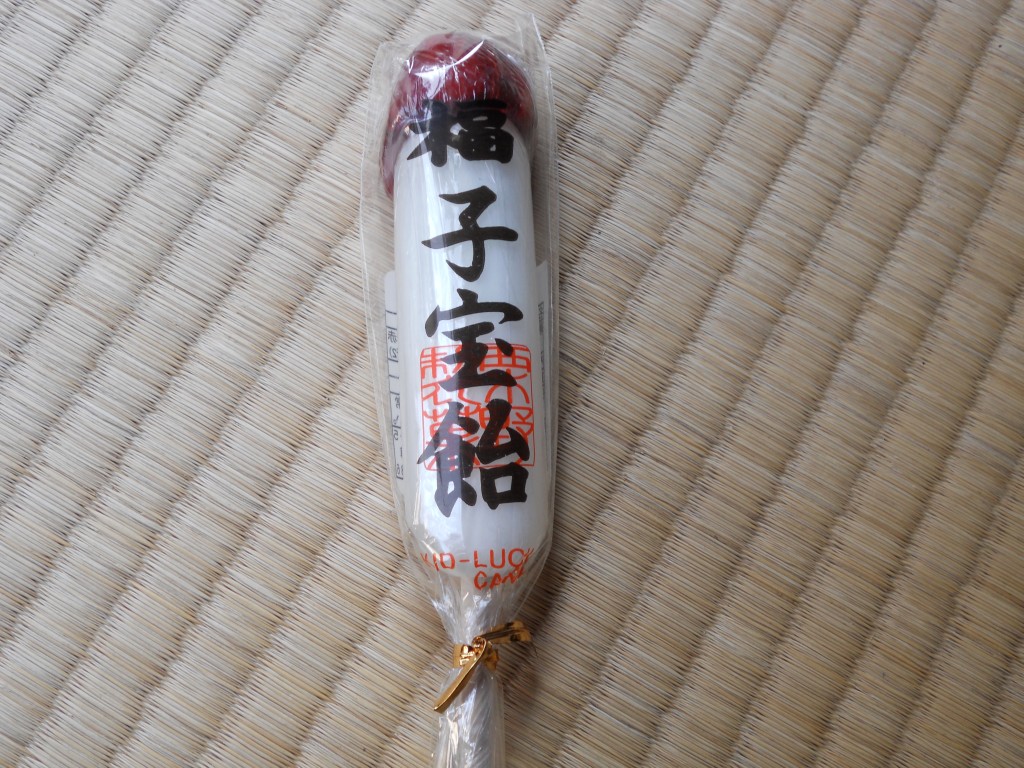
Lick on this! A fertility sweet sold at the shop opposite the shrine

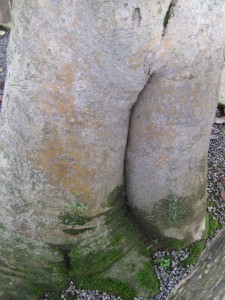
Leave a Reply